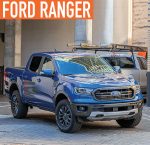What does the future hold for our industry? Is it all electric? Is it automated? Will trucks fly, or will drones take over the industry? No one knows the answer, but Wally Stegall, technical fellow at Morey, shares his thoughts on autonomy in the work truck industry. From the industry’s adoption of technology to a greater need of operators in the industry if automation becomes a reality, Wally tackles it all.
MWS: IS THE WORK TRUCK INDUSTRY SLOW TO ADOPT NEW TECHNOLOGIES?
STEGALL: Overall, no. However, the speed of adoption depends on the type of technology. Work truck OEMs were the first to provide flexible I/O data solutions for control and adopt telematics early for construction.
Through these telematics systems, companies gather a range of data using GPS technology, sensors, and vehicle engine data to provide operators with the information they need to manage their equipment—allowing for improved safety and significant cost savings, reducing fuel spending, mitigating risk, and improving customer service.
Due to the diversity of work trucks, implementing new technology can be a challenge to any operation. But the industry is up-to-date on the current technology offerings.
MWS: WHAT DO TRUCK MANUFACTURERS NEED TO DO TO ENABLE A SHIFT TO TOTAL AUTONOMY IN THE WORK TRUCK INDUSTRY?
STEGALL: Despite the projected growth of autonomous trucking, fleet companies are still identifying the technology needed make fully autonomous fleets a reality, such as health-ready components.
Different levels of automation require varying levels of health-ready components, which use edge computing to self-diagnose vehicle performance problems in real time. This information makes way for the condition-based maintenance needed to enable autonomy.
After the industry shifts to full autonomy, I can see work trucks using autonomy to go from jobsite to jobsite. Vocational equipment already has operator-assisting systems. Therefore, tasks may be fully automated on a case-by-case basis, but they will still have an operator monitoring.
MWS: WHAT IS EDGE COMPUTING AND HOW DOES IT PERTAIN TO AUTONOMOUS TRUCKING?
STEGALL: Edge computing is the practice of processing data near the edge of a network, where the data is generated, instead of in a centralized data-processing location or warehouse. Meaning a task and/or function would be monitored and controlled at the exact point where the task and/or function is taking place.
MWS: HOW WOULD FLEETS BENEFIT FROM THIS TECHNOLOGY VS THEIR EXISTING OPERATIONS?
STEGALL: The greatest benefits the industry will see from total autonomy, health-ready components, and telematics are increased safety and better equipment usage.
Safety is often the top priority. That can include strict safety policies and vehicles equipped with the latest safety technology. Whether leveraging real-time operator feedback for behaviors such as speeding or harsh braking, condition-based maintenance will benefit work trucks and equipment. Also, an important benefit of collecting work truck data is the ability to identify patterns and create models. Although data can reduce the number of safety events, accidents will still happen from time to time. However, telematics can be used to ensure they are handled properly.
Alternatively, telematics and condition-based maintenance will help track the usage of equipment and determine what work needs to be done on a particular truck in real time.
MWS: WHAT KIND OF WORK TRUCK FLEETS WOULD BE MOST SUITED FOR COMPLETE AUTONOMY?
STEGALL: There are several fleets suitable for complete autonomy: hauling fleets, fleets that conduct repetitive tasks, and fleets that follow a pattern of movement or actions in a prepared area.
MWS: WHAT’S IN THE FORECAST FOR AUTONOMOUS VOCATIONAL, DAY-USE TRUCKING?
STEGALL: There will be greater increase in equipment productivity, and leasing will expand due to technology.
In the short term safety systems will advance on the jobsite, travel between jobsites will advance as over the road technology changes, and automation/assist will continue to improve specific tasks.
In addition, operators will become more important on the jobsite and support autonomous fleets in the same way pilots and aerospace technicians support planes despite them having automation capabilities.
MWS: ADDITIONAL THOUGHTS?
STEGALL: For technology like automation to make the strides that many hope for, the exchange of data between end users at design time and work time must increase. With the intelligence captured through edge computing, fleet companies can expand access to more autonomous transportation levels over time.
Edge computing is paving the way for autonomous trucking, and manufacturers must ensure the collection of real-time data to unlock full autonomy.
For more information:
Wally Stegall is the technical fellow at Morey, where he’s led engineering, sales, technical management, and business development efforts for the company. Wally has nearly 30 years of industry experience. He currently sits on the American Trucking Association’s Technology and Maintenance Council as the vice chair of future truck.



